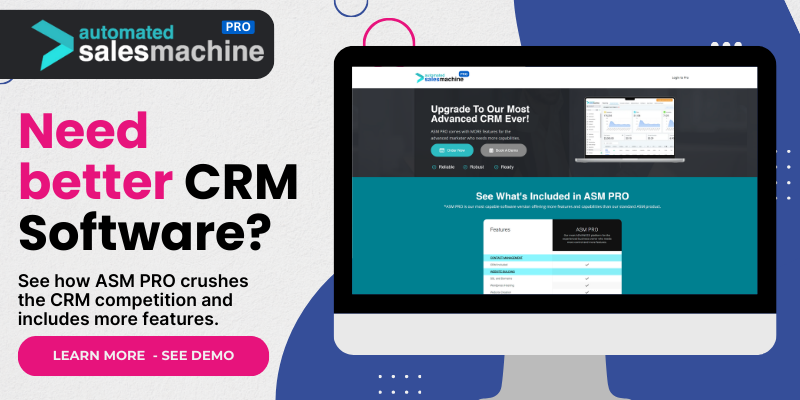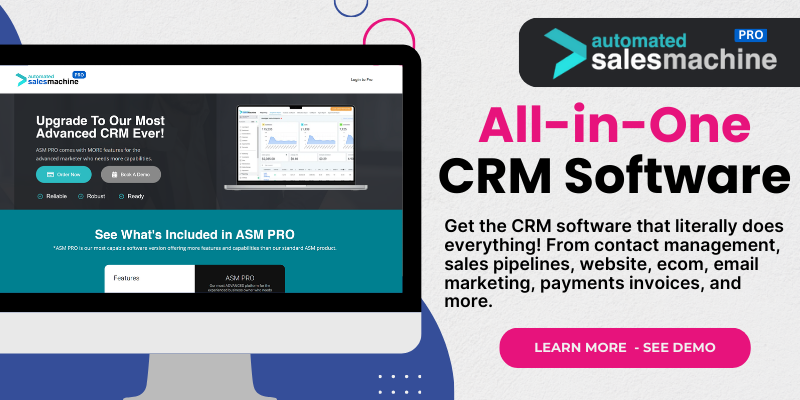Finding the right CRM (Customer Relationship Management) software for credit unions is crucial. With so many options available, you might be wondering which ones truly stand out. Based on my experience and extensive research, I’m excited to share insights about the top options I’ve discovered that are tailor-made for credit unions. Let’s dive into it!
Understanding the Unique Needs of Credit Unions
Why Credit Unions Need Specialized CRM
Credit unions are distinct from traditional banks in several ways, mainly their mission. They’re member-focused rather than profit-oriented, which means their CRM needs are also different. A good CRM for credit unions should cater specifically to member engagement and community focus.
Another aspect is that credit unions often serve a niche market, which requires tailored solutions. This means that general CRMs might not meet specific requirements, such as compliance tracking or member retention strategies.
Lastly, the emphasis on relationship building means a CRM must provide tools for personalized communication. Whether it’s through emails or targeted offers, the CRM needs to enhance these relationships.
Key Features to Look Out For
When shopping for a CRM, there are essential features you shouldn’t overlook. First things first, look for robust data management capabilities. You want a system that can store detailed member information and preferences securely.
Then, consider automation tools. These allow your team to streamline repetitive tasks such as email follow-ups or appointment scheduling, giving you more time to focus on member relations.
Don’t forget about reporting and analytics features. You should be able to track engagement metrics and gain insights into member behaviors to refine your strategies.
Common Challenges Credit Unions Face
Since credit unions usually operate on smaller budgets than larger banks, they often face challenges in acquiring the right tech. Knowing your limitations while aiming for a feature-rich CRM can be a tricky balance to strike.
Integration with existing systems can also be a headache. If your credit union uses specific software for loan processing or member management, ensuring that the CRM integrates seamlessly is vital for overall efficiency.
Lastly, staff training is crucial. The best CRM in the world won’t help if your team struggles to use it. Investing time in training sessions ensures that everyone is on the same page and comfortable with the new system.
Analyzing the Top CRM Options for Credit Unions
1. Salesforce for Financial Services
Salesforce is a giant when it comes to CRM, and their Financial Services Cloud is no exception. It comes loaded with features suitable for credit unions, such as 360-degree member views and tailored engagement tools.
One of my favorite aspects of Salesforce is the level of customization it offers. While it might take time to set up, you can mold it to perfectly fit your credit union’s needs, enhancing member experience.
However, keep in mind that with advanced features comes complexity. Proper training and a robust onboarding process are necessary to ensure your team can leverage its full potential.
2. HubSpot CRM
If you’re looking for an easy-to-use option, HubSpot CRM could be the way to go. It’s particularly appealing due to its free tier, which is a fantastic starting point for smaller credit unions.
The automation features are excellent as well, allowing you to set up workflows for follow-ups or newsletters effortlessly. And the reporting tools? Super insightful without overwhelming your team!
While it may not have all the bells and whistles of more expensive options, HubSpot does a great job at what it offers, focusing on ease and effectiveness.
3. CUNA Mutual Group’s CMFG Ventures
CUNA’s CRM is tailored specifically for credit unions. It offers a suite of features for member engagement, set up by an organization that understands the unique challenges of credit unions.
The emphasis on community lending and engagement strategies makes it a valuable tool. It also provides solutions to enhance member services while ensuring compliance with various regulations.
Since it’s built by credit union professionals, you can trust it’s designed with your needs in mind, from data protection to community-focused features.
Integrating CRM into Daily Operations
Strategies for Successful Implementation
Implementing a new CRM can be daunting, but having a well-thought-out strategy can make all the difference. Start by involving your staff early on and gathering their input on the tools they need most.
Next, track usage and engagement. Make it a habit to check who’s using the CRM and how they’re using it, which can reveal areas where further training is needed.
Lastly, set realistic timelines. Rome wasn’t built in a day, and neither is a well-oiled CRM machine. Allow your team time to adjust, and celebrate small victories to keep morale high!
Training Your Team Effectively
I cannot stress enough how important proper training is. A CRM is only as good as the people using it. Organize regular training sessions to ensure everyone is comfortable navigating the system.
Make training ongoing rather than a one-time event. As features get updated and new tools are introduced, your team should have access to refreshers or advanced training sessions.
Consider appointing a CRM champion within your team. Having someone who loves learning new features can cascade knowledge and help the entire team grow together.
Feedback Loop with Staff
Creating a culture of open feedback is essential for a successful CRM rollout. Regularly ask staff how the CRM is impacting their work. Are there frustrations? Suggestions for improvement?
Scheduling feedback sessions can help you gauge what’s working and what’s not. Actively listen to their concerns and make adjustments wherever possible.
Remember, the aim is to improve member relations, and your team is your front line. Their insights can lead to vital changes that elevate the overall member experience.
Assessing ROI on CRM Investments
Defining Success Metrics
Measuring the success of your CRM comes down to defining clear metrics. Start with member engagement levels—are you seeing an uptick in interactions?
Next, look at retention rates. If your CRM is helping you maintain happy, engaged members, that’s a huge win! Track membership growth and engagement strategies that lead to tangible results.
Don’t forget to assess cost savings on processes that the CRM is automating. Over time, you want to see a return on investment that justifies the costs involved.
Evaluating Costs vs. Benefits
It’s essential to weigh the costs of the CRM against the benefits it provides. For a credit union, every penny counts, so analyze if the CRM helps save more than it costs.
Over time, if you’re seeing increased member satisfaction and retention, those intangible benefits often translate into financial gains, justifying the expense.
Keep in mind, investing in a CRM isn’t just a purchase—it’s investing in the future of your credit union’s growth and relationship building.
Continuous Improvement and Adaptation
The landscape of financial services is always changing, so your CRM’s effectiveness should be continuously reevaluated. Regularly review your defined success metrics to see if they’re still relevant.
Ask yourself: is the CRM still meeting the needs of your members and staff? Adaptability is key—if something isn’t working, don’t hesitate to pivot and explore additional features or different platforms.
Always aim for improvement; tech is always evolving, and keeping up with the latest trends can give your credit union a competitive edge.
Frequently Asked Questions
1. Why is CRM important for credit unions?
CRM is crucial for credit unions as it helps manage member relationships and improve engagement, ultimately leading to better satisfaction and retention rates.
2. What features should I prioritize when selecting a CRM?
Look for data management, automation capabilities, and reporting tools. These features are fundamental for enhancing member interaction and tracking outcomes.
3. Are there free options for CRM software?
Yes, options like HubSpot offer free versions which can be particularly beneficial for smaller credit unions starting out.
4. How can I ensure my team effectively uses the CRM?
Regular training sessions and creating a culture of feedback can significantly help your staff utilize the CRM to its full potential.
5. What metrics should I use to evaluate CRM success?
It’s vital to assess member engagement levels, retention rates, and cost savings from automation to measure the effectiveness of your CRM.
This HTML document offers a comprehensive exploration of the best CRM software options for credit unions, complete with organized sections, troubleshooting insights, and frequently asked questions, all presented in a friendly, approachable tone.
